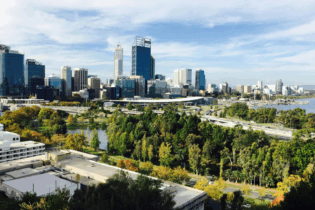Pictured: Environmental Scientist in the KwaZulu-Natal office of SRK Consulting, Philippa Emanuel
Bringing South Africa in line with global standards to manage hazardous waste from industry, mining and other sources will require significant training and capacity building, not to mention substantial financial commitment. Hazardous waste has, by definition, the potential to damage the environment and undermine human health – even at low concentrations – due to its inherent toxicological, chemical and physical characteristics. Managing hazardous waste is a growing priority as South Africa’s economy consumes and discards at an ever-increasing rate, according to senior environmental scientist in the KwaZulu-Natal office of SRK Consulting, Philippa Emanuel. The good news, though, is that laws and regulations are starting to kick in to meet the challenge, and the country is gathering more data on its hazardous waste while rolling out plans to reduce the amount headed for landfill sites. In line with the requirement of the National Environmental Management: Waste Act 59 of 2008, the National Waste Management Strategy has been developed. This strategy sets out goals, targets and actions to address a number of the gaps in both general and hazardous waste management. Weighing up the problem Part of addressing the problem of hazardous waste is the need to fully understand its extent. “One of the main challenges in planning for hazardous waste management is the lack of quantifiable data on how much of this waste the country is generating,” says Emanuel. “This information is currently captured in terms of the South African Waste Information System (SAWIS). Submission of information to SAWIS is currently voluntary. But the National Waste Information Regulations, promulgated in August last year became effective on 1 January 2013 and requires all waste treatment and disposal facilities to supply quantitative information. This is a really big step.” Within 90 days from 1 January, any person conducting an activity listed in Annexure 1 of these regulations is required to register on the SAWIS. Subject to the threshold amounts listed in the annexure, this will cover:- generators of hazardous waste
- anyone recycling or recovering waste
- anyone treating waste
- anyone disposing of waste.
There are other important elements of the national framework that are being finalised, which together will help government to better regulate both the generation and disposal phases of this sector.
The Draft National Standard for Disposal of Waste to Landfill (GN 615 of 2012) will change the way landfills are classified, and the Draft Standard for Assessment of Waste for Landfill Disposal (GN 613 of 2012) will align the type of waste to a suitable disposal facility, depending on its environmental risk. Also in the pipeline is the Draft Waste Classification and Management Regulations (GN 614 of 2012), which will change how waste streams are classified. “Some wastes previously classified as hazardous may no longer fall into this category but, at the same time, wastes previously classified as general waste may now be classified as hazardous,” she explains. “The regulations are based on the SANS 10234 Globally Harmonised System for the classification and labelling of hazardous substances and mixtures, including waste. The approval process for hazardous waste management facilities is time consuming, but necessarily so. “The monitoring and approval requirements are in place to protect the environment and the South African public, especially as the risks associated with the storage, transport, disposal and treatment of hazardous waste are so high, says Emanuel.” “The costs of establishing hazardous waste management facilities are equally high, not just in the establishment and operating costs but also in the ongoing monitoring – even beyond the life of the facility. Again, however, this expenditure is necessary to protect the South African public.” Pulling together While the new framework is moving in the right direction, the regulations also need to be dynamic – as technology and waste management processes evolve so quickly that policy and legislation sometimes struggle to keep up. “For instance, the legal environment is being modified to allow for the utilisation of hazardous waste as a raw material,” she points out. The regulations are applicable nationally, but various spheres of government are actively involved in hazardous waste management at different levels. “While not specifically the mandate of provincial government, we see provinces taking the initiative in this field,” Emanuel continues. “The KwaZulu-Natal Department of Agriculture and Environmental Affairs, for instance, identified hazardous waste management as a critical issue that the province needs to address. “The department appointed SRK Consulting to prepare a Hazardous Waste Management Plan for the province, to consolidate information and develop an integrated plan that included hazardous waste minimisation and reduction, recycling, reuse, treatment and disposal capacity.” Local authorities are also key players in this sector, and in cities like eThekwini, the municipality actively encourages industry to become more efficient and to look for opportunities for reuse within their processes.







